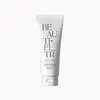What's inside
What's inside
 Key Ingredients
Key Ingredients

 Benefits
Benefits

 Concerns
Concerns

 Ingredients Side-by-side
Ingredients Side-by-side

Octocrylene 7%
UV AbsorberButyl Methoxydibenzoylmethane 2.5%
UV AbsorberBis-Ethylhexyloxyphenol Methoxyphenyl Triazine 2%
Skin ConditioningPhenylbenzimidazole Sulfonic Acid 2%
UV AbsorberWater
Skin ConditioningEthylhexylglycerin
Skin ConditioningPhenoxyethanol
PreservativeIodopropynyl Butylcarbamate
PreservativeGlycerin
HumectantDisodium EDTA
Sodium Hydroxide
BufferingC12-15 Alkyl Benzoate
AntimicrobialPotassium Cetyl Phosphate
EmulsifyingSorbitan Stearate
EmulsifyingTocopheryl Acetate
AntioxidantCetearyl Alcohol
EmollientGlyceryl Stearate
EmollientCarbomer
Emulsion StabilisingAllantoin
Skin ConditioningSodium Hyaluronate
HumectantPanthenol
Skin ConditioningBisabolol
MaskingCI 77492
Cosmetic ColorantCI 77499
Cosmetic ColorantCI 77491
Cosmetic ColorantOctocrylene 7%, Butyl Methoxydibenzoylmethane 2.5%, Bis-Ethylhexyloxyphenol Methoxyphenyl Triazine 2%, Phenylbenzimidazole Sulfonic Acid 2%, Water, Ethylhexylglycerin, Phenoxyethanol, Iodopropynyl Butylcarbamate, Glycerin, Disodium EDTA, Sodium Hydroxide, C12-15 Alkyl Benzoate, Potassium Cetyl Phosphate, Sorbitan Stearate, Tocopheryl Acetate, Cetearyl Alcohol, Glyceryl Stearate, Carbomer, Allantoin, Sodium Hyaluronate, Panthenol, Bisabolol, CI 77492, CI 77499, CI 77491
Zinc Oxide
Cosmetic ColorantIsostearic Acid
CleansingPolyglyceryl-3 Polyricinoleate
EmulsifyingCaprylic/Capric Triglyceride
MaskingSodium Benzoate
MaskingCetearyl Alcohol
EmollientDisodium EDTA
Glycerin
HumectantOctyldodecanol
EmollientWater
Skin ConditioningGluconolactone
Skin ConditioningSodium Chloride
MaskingCetearyl Glucoside
EmulsifyingPEG-30 Dipolyhydroxystearate
EmulsifyingTerminalia Ferdinandiana Fruit Extract
AntioxidantCI 77491
Cosmetic ColorantCI 77492
Cosmetic ColorantTitanium Dioxide
Cosmetic ColorantCoco-Caprylate/Caprate
EmollientZinc Oxide, Isostearic Acid, Polyglyceryl-3 Polyricinoleate, Caprylic/Capric Triglyceride, Sodium Benzoate, Cetearyl Alcohol, Disodium EDTA, Glycerin, Octyldodecanol, Water, Gluconolactone, Sodium Chloride, Cetearyl Glucoside, PEG-30 Dipolyhydroxystearate, Terminalia Ferdinandiana Fruit Extract, CI 77491, CI 77492, Titanium Dioxide, Coco-Caprylate/Caprate
Ingredients Explained
These ingredients are found in both products.
Ingredients higher up in an ingredient list are typically present in a larger amount.
Cetearyl alcohol is a mixture of two fatty alcohols: cetyl alcohol and stearyl alcohol. It is mainly used as an emulsifier. Emulsifiers help prevent the separation of oils and products. Due to its composition, it can also be used to thicken a product or help create foam.
Cetearyl alcohol is an emollient. Emollients help soothe and hydrate the skin by trapping moisture.
Studies show Cetearyl alcohol is non-toxic and non-irritating. The FDA allows products labeled "alcohol-free" to have fatty alcohols.
This ingredient is usually derived from plant oils such as palm, vegetable, or coconut oils. There is debate on whether this ingredient will cause acne.
Due to the fatty acid base, this ingredient may not be Malassezia folliculitis safe.
Learn more about Cetearyl AlcoholCi 77491 is also hydrated iron III oxide. It's sole purpose is to give a red/pink hue to products.
Iron III oxides are classified as inorganic chemicals for coloring.
Synthetically created Ci 77491 is considered safer than those naturally found. This is because the synthetically created version may contain less impurities. Iron oxides are generally non-toxic and non-allergenic.
Learn more about CI 77491Ci 77492 is also hydrated iron III oxide. It's sole purpose is to give a yellow hue to products.
Iron III oxides are classified as inorganic chemicals for coloring.
Synthetically created Ci 77492 is considered safer than those naturally found. This is because the synthetically created version may contain less impurities. Iron oxides are generally non-toxic and non-allergenic.
Learn more about CI 77492Disodium EDTA plays a role in making products more stable by aiding other preservatives.
It is a chelating agent, meaning it neutralizes metal ions that may be found in a product.
Disodium EDTA is a salt of edetic acid and is found to be safe in cosmetic ingredients.
Learn more about Disodium EDTAGlycerin is already naturally found in your skin. It helps moisturize and protect your skin.
A study from 2016 found glycerin to be more effective as a humectant than AHAs and hyaluronic acid.
As a humectant, it helps the skin stay hydrated by pulling moisture to your skin. The low molecular weight of glycerin allows it to pull moisture into the deeper layers of your skin.
Hydrated skin improves your skin barrier; Your skin barrier helps protect against irritants and bacteria.
Glycerin has also been found to have antimicrobial and antiviral properties. Due to these properties, glycerin is often used in wound and burn treatments.
In cosmetics, glycerin is usually derived from plants such as soybean or palm. However, it can also be sourced from animals, such as tallow or animal fat.
This ingredient is organic, colorless, odorless, and non-toxic.
Glycerin is the name for this ingredient in American English. British English uses Glycerol/Glycerine.
Learn more about GlycerinWater. It's the most common cosmetic ingredient of all. You'll usually see it at the top of ingredient lists, meaning that it makes up the largest part of the product.
So why is it so popular? Water most often acts as a solvent - this means that it helps dissolve other ingredients into the formulation.
You'll also recognize water as that liquid we all need to stay alive. If you see this, drink a glass of water. Stay hydrated!
Learn more about Water